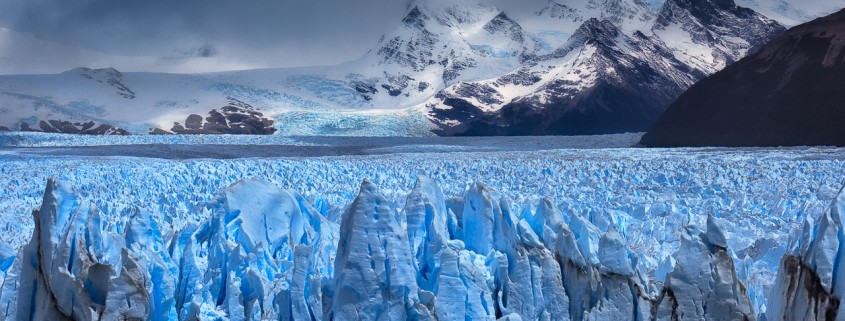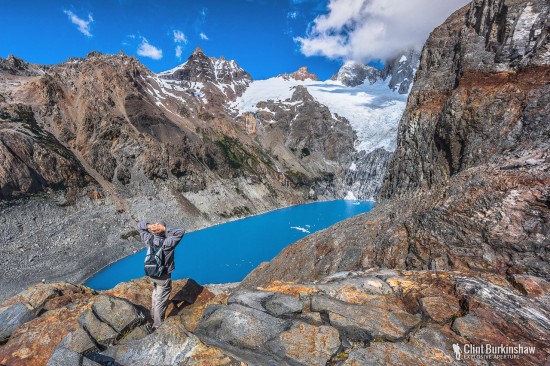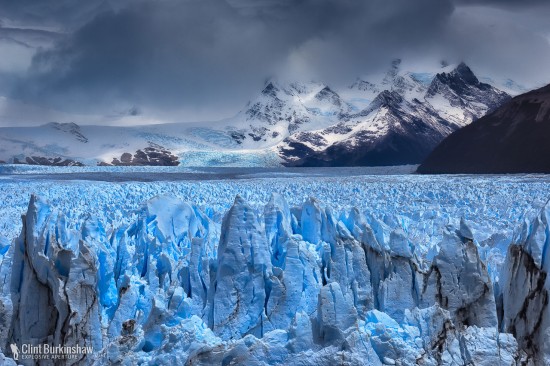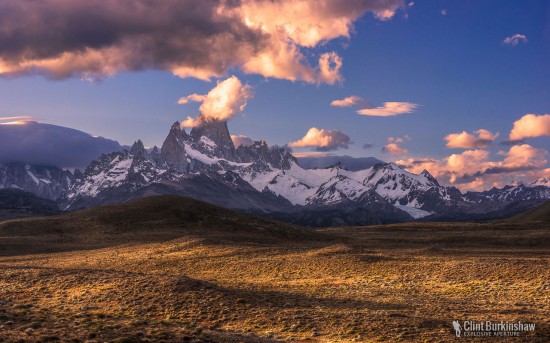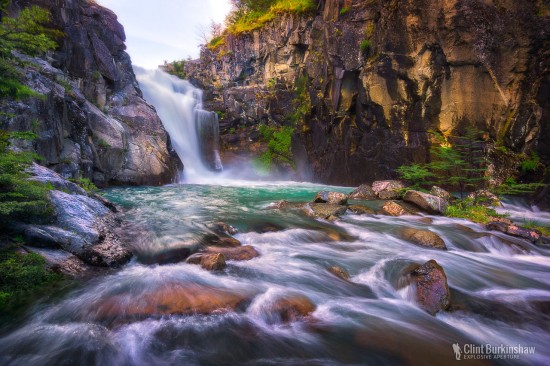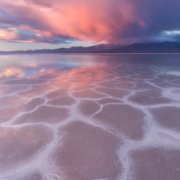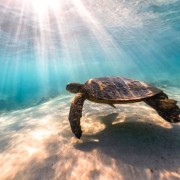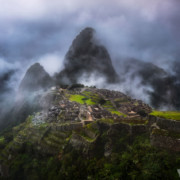Patagonia Photography and Trekking
Without stepping foot in Antarctica, the furthest south on the planet you can go is southern Patagonia. Things are different down there at the end of the world. The windswept landscapes are ruled by grass and shrubs, where the trees that do grow, do so at 45 degree angles. Patagonia packs a punch when it comes to the environment, and is something you shouldn’t venture into unprepared. The winds ravage the land, sea and mountains. The winter is harsh and cold, with little light and long hours of darkness. But the summer sun is soothing, with crisp and refreshing air, and daylight hours reaching close to midnight creating perfect conditions for dramatic Patagonia photography.
Several years ago I had spent a year backpacking around Latin America, mainly South America. So you’d think in all that time, a travel photographer would have made it to one of South America’s finest landscapes. But nope, I never made it. So with the promise of returning, my wife and I made sure that this is where we ended our 15 month journey west around the globe before returning home to Australia. So, departing Colombia we took a flight from one end of the continent to the other. After many hours in transport, we landed in Punta Arenas; one of the furthest places south on the planet you can go.
Perito Moreno Glacier
One of our first major sites that we saw during my Patagonia photo adventure was slightly north just outside the town El Calafate in Argentina. This is quite a characteristic town full of local trekking and camping shops for those seeking adventure nearby. We sought out El Calafate for the Perito Moreno Glacier; arguably one of the worlds most mind blowing glaciers. Perito Moreno, just 78 kilometres out of the town is one of only three Patagonian glacier still growing. So before too long, we were there up close and personal, staring at the 75 meter high and 5 kilometre wide wall of the most incredible jagged ice, creaking eerie noises every few seconds. Chunks of ice weighing tens of thousands of kilograms periodically broke off and crashed into the water that created thunderous sounds. With the backdrop of snow capped mountains, this place looked like an absolute dream!
While the glacier takes all the attention, don’t forget to explore on the day the absolutely wonderful scenery that surrounds Perito Moreno. I as able to capture some stunning landscape photos among the beautiful turquoise lakes with bobbing icebergs, snow capped mountains, and stunning alpine forests that are full of walking trails.
Photographing Perito Moreno
The weather here, like all of Patagonia, is unpredictable and changes very rapidly. This means it can be quite hard to plan for good weather, therefor you’ll definitely have to come prepared with winter clothes & protective gear for your camera equipment. This will allow you to sit and spent time watching and photographing Patagonia’s the ever-changing glacier as super massive chunks fall off and slam into the water below. Due to the nature of the surroundings, size and distance of the glacier, I’d recommend photographing with a focal length of around 75mm to 135mm (based on a full frame sensor). This will allow you to capture enough detail of the foreground glacier, while including some of the mountains in the background. But of course, I’ll always recommend bringing a versatile lens setup, so you can achieve different perspectives. I also found shooting both ultra-wide and zoomed in was quite effective. Due to the nature of the scene, you’ll shoot most of your Patagonia photos here without a close foreground, so opening up that aperture in dull conditions shouldn’t be too much of a problem in most circumstances.
Mount Fitz Roy
While the Chile’s Torres del Paine takes most of the limelight, lets not discount how equally stunning this mountain range is. Several hours north of El Calafate sits an absolutely beautiful village called El Chaltén. This quaint little place sits in the shadow of Mount Fitz Roy, and is surrounded in nearly all directions by mountains. It may be cold, it may be windy, but putting in the effort to get to this place is definitely worthwhile. You could actually spend over a week in this one spot as it’s home to several amazing treks in the nearby surrounding mountain range. The weather was in turmoil when we were there, so we had no choice but to hold out for 5 days before we could set out on our trek into the mountains. After the weather decided to cooperate, we spent three days wandering around the mountains, visiting Laguna Torre, home to the base of a glacier which gives way to a lake housing many bright white icebergs. We climbed to lookouts with beautiful 360 degree views, trekked through mesmerizing alpine forests, got soaking wet and blown around by fierce winds. And for our final morning we saved the best for last; a dawn trek up to Laguna Los Tres at the base of Mount Fitz Roy to be greeted with amazing weather and a stunning calm turquoise lake that’s surrounded by snow capped mountains. This specific location is incredible and would have to be Argentina’s most beautiful asset. For those who make it here, don’t miss the the view from behind Laguna Los Tres (photo top of page), which is a view of the neighbouring valley and Laguna Susia from above. The view is just as good, if not better!
Photographing Patagonia
I have a feeling I’m going to be saying this quite a bit, but photographing this area is typical Patagonia where the extreme weather conditions make it flat out impossible one minute and perfect the next. You may find yourself photographing Patagonia landscape in balmy calm conditions with a sunlit landscape in front of you, and before you know it you’re bursting through your bag for your rain jacket with your camera wrapped in a plastic bag and you’re fighting to not get blown down the near cliff face. But this is Patagonia, I love it for it’s craziness. You’re ultra wide lens will be your best friend here! The landscapes photos here are very dramatic with mountains at heights above you, with trees and lakes below you. It’s a great place to find some intriguing foreground with one of the best backdrops you could wish for. Though saying this, some of my favourite shots are from a distance with a 50mm (or 75mm equivalent on full frame). I personally just love the entire group of towering peaks in a single photo. But you’ll have to get back – I’m talking like an hour or so hike back from the Cuernos group to use this type of lens. Conditions can often been overcast, so ensure you have your travel tripod here (I say travel tripod as you’ll be doing a lot of hiking). Ensure you have water proof clothing & bags, and a plastic bag close by to quickly wrap up your camera gear in an emergency. In conditions like these, plastic bags are your friend!
So if you find yourself in southern South America during the summer months, be sure to head on down to enjoy your own Patagonia photo adventure. You will not come away disappointed!
Continued Next: Photographing Torres del Paine in Patagonia, Chile

